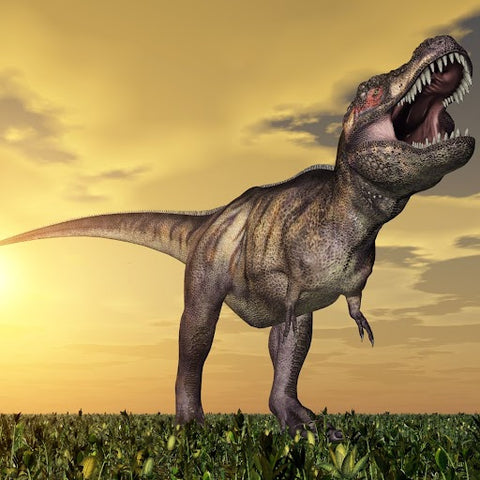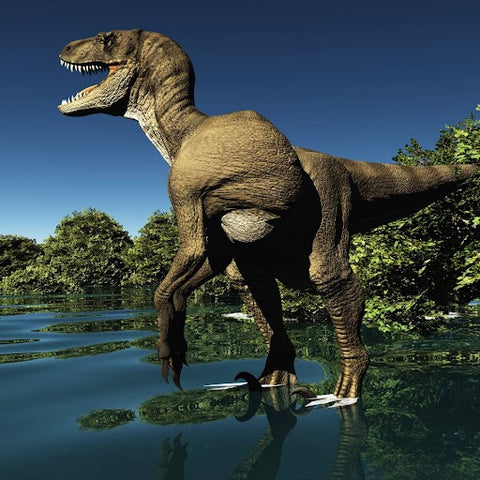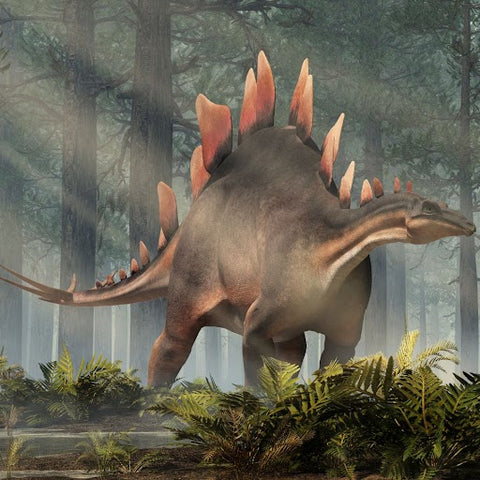Introduction
Dinosaurs continue to capture the imagination of people worldwide even after their extinction. These prehistoric beasts, perhaps more than any other ancient animals, embody the sense of wonder, discovery, and adventure that drives scientific inquiry. Recent paleontological finds have significantly expanded our knowledge of some of the most popular dinosaurs that roamed during the Mesozoic Era, and these exciting new discoveries provide remarkable insights into the anatomy, behavior, evolution, and lives of these iconic creatures.
Tyrannosaurus rex
Perhaps no dinosaur is as popular as the notorious T. rex, the giant carnivorous theropod that everyone has been familiar with for ages. The recent tyrannosaur discoveries have not only strengthened but have also shaken up the seemingly widely accepted facts about the powerful T. rex. Back in 2021, paleontologists stumbled upon a well-intact skull in Montana boasting delicate bones still intact, providing a peek into the tyrannosaur'styrannosaur's neurological structure. To the amazement of the researchers, the scan revealed a brain structure that was more similar to modern birds than reptiles, a sign of the higher intelligence that the latter were assumed to have. Other recent tyrannosaur vertebrates also seem to suggest that their face had scales on some parts of it, not just feathers, which is contrary to earlier findings. In spite of the fact that a fluffy dino in a suit of fur is the most popular picture on TV, almost all evidence suggests that scales cover most of the body. It is perplexing that a 2020 study analyzing bone growth lines pushed T. rex ages into the 30s and 40s, according to estimates, unexpectedly extending the lifespan of such a giant. The unveilings only reinforce the tyrannosaur's position as one of the most masterful and formidable hunters of the Late Cretaceous.

Triceratops
The new Triceratops discoveries have given us tasty hints about the behavior of this huge horned herbivore. In 2019, a group of scientists from Wyoming discovered a fossil site that gives a partial look at adult Triceratops and bones of more than a dozen juveniles. The collection gives a picture of them living in herds with different age groups, similar to the way modern mammal groups do. Research on the skull variation suggests that Triceratops probably went through remarkable metamorphoses as it matured, eventually transforming from a juvenile one-horned morphology into the more well-known three-horned adult character. To further demonstrate that this Triceratops ontogeny hypothesis is correct, this has been hypothesized but only recently proven based on the evidence. In addition to the Triceratops fossils, the rare impressions of the skin show the capturing pattern of the tuberous scales covering the animal's body. These breakthroughs revolutionize the understanding of the development, sociality, and looks of Triceratops.

Velociraptor
Famous from Jurassic Park, the V-raptor is still feared for its ferocity even though it is smaller in body size and is one of the popular dinosaurs. Besides, the latest research throws light on the minute details of the life and behavior of the ancient creature which was medium-sized. The impeccable fossils from Mongolia show that the name of the species, Velociraptor, meaning the "swift seizer," was due to a defensive response to the attack on the Protoceratops, which clearly proves its predatory nature. Furthermore, the tearing of the skin and the wear on the teeth and bones point to the fact that Velociraptor also added scavenging to hunting as one of its ways of feeding. They are often seen together and scavenging supplements, hunting by stealing food on the killing surface. Such an observation proved that Velociraptors could have had feathers not only on their forelimbs but also on their arms. In depicting the early birds, the traditional portrayals are contrary to the presently popular view that feathers were restricted to wings, head, and tail, unlike the plumage as it is now. Despite a featured petite body image as compared to what is known in popular culture today, its brain and coordinated pack hunting were not any less intelligent and a threat than what was known before.

Stegosaurus
The heavily plated and spiked Stegosaurus holds the distinction of being one of the most recognizable dinosaurs. But compared to T. rex and Triceratops, fewer details have been confirmed about this plate-backed plant-eater. Exciting new stegosaur specimens are beginning to change that. Remarkably well-preserved fossils revealed the presence of long throat tubes that provided inflatable air sacs connected to its lungs. This unexpected anatomical discovery indicates Stegosaurus may have been capable of thermoregulation via these air sacs. Other stegosaur finds contain fossilized skin impressions, which showed the staggered triangular arrangement of the iconic plates along its back. Perhaps most intriguing, a Stegosaurus skull discovery in 2020 finally confirmed this dinosaur's tiny brain size, barely larger than a dog's despite its hefty body. These and other recent stegosaur finds continue to fill in our knowledge gaps about this dinosaur's anatomy, biology, and evolution.
Whether it's T. rex, or the fearsome Velociraptor, modern paleontological findings have revealed many fascinating facts about the greatest favorites of dinosaurs. Specific analytical methods and remarkable fossil finds have elicited the responses to the century's long-standing queries and also several interesting questions about these prehistoric creatures that oozed the dinosaur age. The revelation of new evidence, the exposure to dinosaur physiology and behavior, and the evidence that contradicts the myths will show the undiscovered capacity of continuous dinosaur discoveries. With the fossil record continuing to yield new specimens, our knowledge of even these most well-known dinosaurs will continue to grow and develop further. As a result of painstaking scientific research, paleontologists succeed in keeping dinosaurs not only as fascinating living organisms but, even more, as something awe-inspiring for generations to come. Recent paleontological finds have significantly expanded our knowledge of some of the most popular dinosaurs that roamed during the Mesozoic Era, which spanned the age of dinosaurs from about 252 to 66 million years ago.

Conclusion
Even though the dinosaurs featured in this writing may excite the public, there are many mysterious species that have seen fascinating finds in recent times. For instance, the Ankylosaur Zuul has yielded valuable information concerning the anatomy of this group due to its skeletons that are exceptionally preserved. In fact, much more complete finds have been made only in the last few years for two-legged herbivores like Mussaurus and Plateosaurus. These have not only resulted in new revelations about dinosaur physiology and growth but also unearthed many things that were not known before. Alongside dinosaurs, recent fossilized ichthyosaur reptiles from the oceans are equally great new finds. Ongoing revelations such as this take place regularly, reiterating the fact that there is still much left to uncover from the past of dinosaurs and their kingdom. Each newly elucidated discovery paints in more detail and enables us to gain more insight into the existing cultural persistence and significance of these iconic prehistoric animals.
Beyond fossils, technical innovation also provides a method for paleontologists to make new discoveries from already-existing dinosaur specimens. Advanced scanning technologies find out the finer details of the anatomy that were not captured in the early examinations. Nanoscale dental wear, bone histology, and geochemical isotopes allow for a reconstruction of behavior and physiology that is hard to achieve when relying only on the bones. As for computer models and simulations, they allow us to focus on modern theories on movement and interactions among those ancient creatures. The utilization of innovative analytical procedures assumes the cause of the continuance of the exciting wave of brand new discoveries and new perspectives on the most popular dinosaurs.
Discover Amazing Prehistoric Treasures at Fossil Age Minerals
For those looking to add exquisite fossils or other rare finds to their personal collection, Fossil Age Minerals has an amazing selection of museum-quality specimens. Our collection includes fascinating animal and plant fossils dated over millions of years old. Every fossil is guaranteed authentic and comes with a certificate of origin. Our website offers worldwide shipping and guarantees the authenticity of every fossil. Explore our website and unearth your own piece of pre-history.


